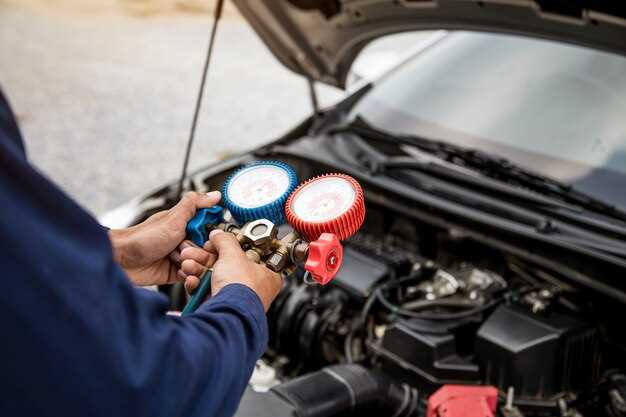
A properly functioning air conditioning (AC) system is essential for maintaining a comfortable environment inside your vehicle, especially during hot weather. When the air coming from your AC is no longer cool or fails to provide the necessary comfort, it’s time to recharge your car’s AC system. This guide will walk you through the necessary steps to ensure that your car’s air conditioning system is back in peak condition.
Recharging your car’s AC involves adding refrigerant to the system, which is crucial for the circulation of cool air. Over time, the refrigerant may deplete due to leaks or natural evaporation, leading to a decline in performance. Knowing how to address this issue efficiently can save you from costly repairs and ensure that your driving experience remains comfortable.
In this guide, you will discover the tools you need, the step-by-step process of recharging your AC, and valuable tips for troubleshooting common problems. By following these instructions, you can restore the cool, refreshing air that your car’s AC system is meant to provide, enhancing your overall driving experience.
Identify Signs of Low Refrigerant in Your Car AC
Recognizing the signs of low refrigerant in your car’s AC system is crucial for maintaining optimal air conditioning performance. One of the first indicators is insufficient cooling. If the air blowing from your AC vents is not as cold as it used to be, it could signal a refrigerant deficiency.
Another sign to watch for is the presence of ice on the AC components. When refrigerant levels are low, the evaporator coil can become too cold, causing moisture to freeze. If you notice ice forming around the evaporator or the refrigerant lines, it’s vital to check your refrigerant levels.
Additionally, unusual hissing or bubbling noises from the AC system can indicate a refrigerant leak. These sounds often occur when refrigerant is escaping from a compromised line or seal. If you hear these noises, it’s important to investigate further.
Finally, if your car’s air conditioning system cycles on and off frequently, this may also be a sign of low refrigerant. The system may struggle to operate effectively, leading to a disruption in the cooling process.
Recognizing these signs early can save you from more extensive repairs and ensure that your AC system continues to function efficiently. If you suspect low refrigerant levels, consider scheduling a recharge to restore proper airflow and temperature.
Gather Necessary Tools and Supplies for AC Recharge

To successfully recharge your car’s air conditioning (AC) system, you need to collect the right tools and supplies. The first essential item is a reliable AC manifold gauge set. This tool allows you to measure the pressure of the refrigerant in your system and ensure it falls within the appropriate range for cooling performance.
Next, obtain a canister of the correct type of refrigerant for your vehicle. There are different types of refrigerants, such as R-134a and R-1234yf, so verify which one your car requires. Some kits come with a hose and a gauge, simplifying the recharging process.
It’s also important to have a pair of protective gloves and safety goggles. Working with refrigerants can be hazardous, so these safety items will help protect against potential spills or accidental contact.
A vehicle manual can provide invaluable information regarding the specifications of your AC system, including how many ounces of refrigerant your system requires. Additionally, consider gathering an AC system leak detector, as it can help identify any leaks that might be causing poor cooling performance.
Lastly, ensure you have a clean area to work in, free from debris. This will help you keep the tools organized and prevent contaminants from entering the AC system. With these tools and supplies ready, you’ll be well-equipped to recharge your car’s air conditioning and restore that cool air you love.
Follow Proper Steps to Recharge Your Car AC System

To ensure your vehicle’s air conditioning system delivers a cool and comfortable environment, it’s essential to follow proper steps to recharge your car AC. This process involves checking the system, adding refrigerant, and testing the air output.
First, start by inspecting the AC unit for any obvious leaks or damage. Pay close attention to the hoses, connections, and the compressor. If you notice any issues, consider consulting a professional before proceeding with the recharge.
Next, locate the low-pressure service port on your vehicle’s AC system. It’s typically found near the compressor. Remove the cap and connect the recharge hose from the refrigerant canister to this port. Ensure that the connection is secure to prevent any air from entering the system.
Before you add refrigerant, run the engine and set the AC to the maximum setting. This allows the system to circulate and prepares it for the recharge. Check the pressure gauge on the recharge hose; it should indicate whether your system is low on refrigerant.
If the pressure is below the recommended range, proceed to slowly add the refrigerant while periodically checking the gauge. Avoid overfilling, as this can cause damage to your AC system. It’s important to monitor the air output during this process. If the air feels cool, you are on the right track.
Once you have achieved the optimal refrigerant level, disconnect the hose from the service port and replace the cap. Start the engine again and test the air temperature coming from the vents to ensure it is adequately cool.
By following these steps, you can successfully recharge your car AC system, ensuring effective operation and a comfortable driving experience.




